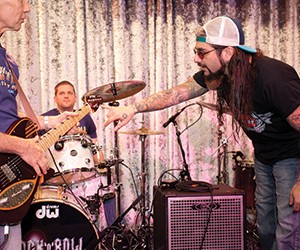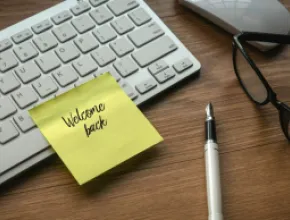Snap quiz: What’s the surest way to make sure attendees are paying attention and absorbing your meeting’s key messages?
Answer: Make sure attendees are laughing, playing and rocking a good time!
“It’s not about having fun, it’s about increasing the return on your meeting investment,” says Kerri Wawrin, CMP, program manager for BCD M&I. “Creating a program that guides and helps attendees have a good time, giving them permission to let their hair down and rock out, makes a real difference in retention and repeat attendance.”
Granted, helping event attendees have a great time can sound counterintuitive. Lingering memories of the public and political backlash from what was perceived as excessive event spending by AIG and other companies in the face of massive financial losses have left sponsors, vendors and planners cautious. So has the fallout from a lavish 2010 General Services Administration conference in Las Vegas, with conference spending that cost top agency officials their jobs in 2012.
At the same time, planners and event sponsors recognize the need to get attendees more involved with meeting content and do a better job of remembering—and acting on—key messages. Learning experts have long recognized that positive reinforcement works better than negative reinforcement, and one could surmise that the most positive reinforcement an event can provide is fun, excitement, laughter and rollicking group good times.
“Even if people don’t have a choice about attending your corporate event, they come with a better attitude if they know they can let their hair down a bit,” Wawrin says. “Effective presenters don’t tell jokes because they like to tell jokes. They tell jokes because they know that laughter hammers home the message more effectively and more reliably than any other technique.”
In Las Vegas, David Fishof turned attendee participation into attendee frenzy as CEO of Rock ’n’ Roll Fantasy Camp. Rock, blues and country stars such as Jeff Beck, Roger Daltrey, Johnny Lang, Wynonna Judd and more take attendees in hand for a live experience that no one ever forgets—reworking classic songs with company-themed lyrics, and performing them to the delight and amazement of co-workers.PageBreak
“Last year, we had Bon Jovi and 50 percent of attendees watched the show and the other 50 percent were flirting in the back,” says Paul Caine, president of People magazine, who said that a move to using Rock ’n’ Roll Fantasy Camp resulted in full engagement and maximum attendance for his employees.
“The next year Rock Camp came to the same convention and we did our team rock stars program with Roger Daltrey singing with the employee bands, and because the show featured the employees no one left the room—everyone wanted to see their fellow workers on stage,” Fishof adds. “It always amazes me after all these years how the power of music brings people together to work for one common goal.”
KEEP 'EM LAUGHING
Laughter is even more effective in 2014 because comedy has been hard to come by in recent years. Nobody has ever been fired for a boring PowerPoint presentation, Wawrin noted, but jobs have been lost in the public outrage over what was seen as lavish and wasteful event spending. Not surprisingly, event sponsors have retreated back to the basics and squelched many activities that look like they might be more fun than serious content.
“Meetings were stripped to the bones—the ones that weren’t canceled outright,” says Dale Irwin, CSP, a Chicago-based stand-up comedian who focuses on the corporate market. “There are no fluff speakers on the event circuit any more. You have to have serious content. But serious content is not the stuff that keeps your attendees engaged. Engagement comes from laughter.”
Irwin bills himself as the world’s only Professional Summarizer. He typically MCs an event and interjects monologues based on meeting content, presentations and attendee responses.
“I used to be the smart-ass who sat in the back of the room and cracked jokes about the teacher,” he says. “Now I get paid to stand at the front of the room to do the same kinds of things that used to earn me detention. Making attendees laugh is very serious business. People remember a presenter’s points much more effectively when they hear them a second time with humor.
“As a presenter and as a planner, you have to remember that keeping people laughing is a valuable tactic,” Irwin continues. “When you’re in the audience and laughing, you’re not asleep, you’re paying attention. Very close attention because you don’t want to miss the next line in case it’s about you, or somebody you know or maybe your boss. When you’re laughing, you’re not checking e-mail, playing Angry Birds or walking out of the presentation. You are actively engaged with the content. That doesn’t happen so much with PowerPoint.”
Veteran actor and Monty Python co-founder John Cleese has become an icon in the training world through his pioneering use of comedy in training. So have household names such as Tina Fey, Stephen Colbert, John Candy, John Belushi, Gilda Radner, Joan Rivers, Alan Arkin, Mike Myers, Chris Farley and Steve Carell, among others, who did corporate work with Second City, the ultimate grad school of comedy. PageBreak
Second City remains heavily involved in private performances and custom programs for the corporate market. But not every corporate culture is a good fit with Second City’s unique view of reality or its price structure. The good news is that almost every market that supports professional theater also supports professional comedy. The bigger the market, the bigger the comedy. There’s the Capitol Steps from Washington, D.C. (“We put the MOCK in democracy”), the Water Coolers from New York (a sketch comedy troupe specializing in entertaining corporate groups all around the nation) and Carolina Improv from Myrtle Beach, S.C.
“The phone is ringing off the hook,” says Carolina Improv President Gina Cligrow. “The economy is turning and companies need something different for training and other events. Employees today are more stressed out than ever before.
“We use comedy to de-stress them and underline those key event messages,” she continues. “Attendees are having a good time, but they are retaining your content more effectively because they are laughing with it. We use comedy to help companies build productivity and profitability through more-effective training.”
HOW TO PITCH FUN
Putting fun back into meetings can be a tough sell. No one knows that better than people who do comedy for a living.
“You have to start with a dose of reality,” Cligrow says. “Meeting attendees get bored with the same format, the same speeches, the same speakers. We know that, planners know that, but it can be a tough message to get through to sponsors who remember bad publicity from ‘lavish’ events, even if the events were sponsored by some other company. The key is helping the sponsor realize that humor can get them more attention from attendees than other types of presentations and bring a stronger return on the meeting investment. Having a good time is a tool to improve that all-important return on investment. Even sponsors who don’t understand comedy understand ROI.”
But fun is more than just comedy. Tracey Adams, project manager for BCD M&I, brought in the Water Coolers for a New Orleans event earlier this year, but the fun didn’t stop with a customized 25-minute song and dance show filled with insider jokes and BCD M&I satire.
Adams and Scott Graf, global president of BCD M&I, reworked the entire event to make it hard for attendees to not have a good time and remain engaged, including a ban on long or drawn-out PowerPoint presentations. They also partnered with invaluable industry partners and hosts who helped design the meeting space and related group activities to promote attendee engagement and enjoyment.
The group of almost 100 BCD M&I managers and sales personnel broke into smaller groups for walking tours of the French Quarter to both introduce the destination and get them talking outside of the meeting hotel. An interactive app replaced written program materials to encourage participation. Adams worked with the event planning team to create and produce customized breakout sessions based on attendee requests for specific topics.
There was even a contest based on app postings during the event. Several attendees posted more than 500 updates and images each during the three-day event. One attendee posted more than 1,000 times.
“We gave attendees reasons to pay attention and to be part of the event,” Adams says. “We showed pictures during breaks, which helped them refocus on what they had seen and done because they saw the same event through so many different sets of eyes. It was great working with our internal technology team in order to make the meeting so interactive."






